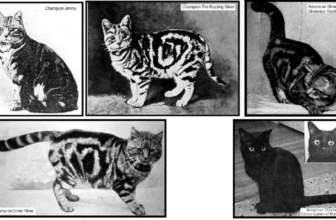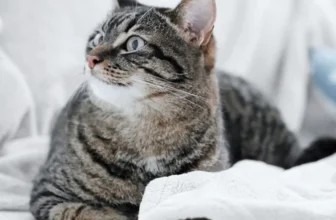Introduction
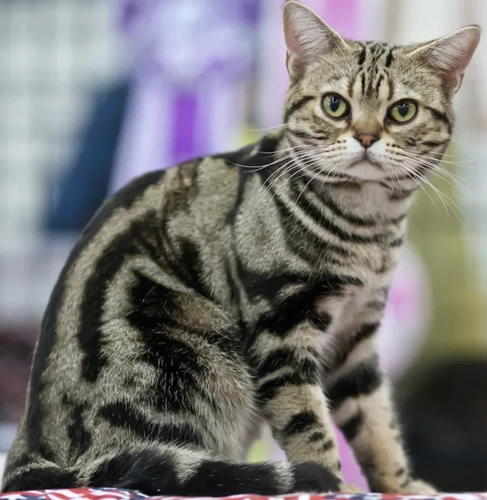
Welcoming a new American Shorthair into your home can be an exciting experience. These affectionate and playful cats are a popular choice for pet owners due to their sweet personalities and adorable looks. However, just like any other cat breed, American Shorthairs can display some concerning behaviors that need to be addressed. In this article, we’ll explore the most common behavioral problems exhibited by American Shorthairs and provide effective solutions to help you overcome them. So, let’s dive in and learn how to ensure a happy and healthy life for your feline friend.
Meet the American Shorthair
The American Shorthair is a beloved breed known for its sweet disposition and charming personality. Despite being a domesticated cat, American Shorthairs still have many of the same natural instincts as their wild feline relatives. This breed is known for its sturdy, muscular build and its short, thick coat, which comes in a wide range of colors and patterns. They are also known for their playful and affectionate nature, making them a popular choice for families and single pet owners alike.
Physical Characteristics:
- The American Shorthair is a medium to large-sized breed, weighing between 8-15 pounds.
- Its body is sturdy and muscular, with a broad chest and strong legs.
- The coat is short, thick, and comes in a wide range of colors and patterns.
- They have round, expressive eyes and a sweet, gentle expression.
Personality Traits:
- American Shorthairs are known for their playful and affectionate nature. They love to play and interact with their owners.
- They are also very adaptable and can adjust to different living situations, making them great pets for families or single pet owners.
- While typically friendly and gentle, some American Shorthairs can exhibit aggressive behavior. It’s important to understand the causes of this behavior and how to address it.
- They are not particularly vocal cats, but they may make occasional chirping or trilling sounds in response to their environment.
Whether you’re a first-time cat owner or a seasoned pet parent, the American Shorthair is a wonderful breed to consider. Their easy-going nature and playful personality make them a joy to be around. Be sure to check out our tips and tricks for training your American Shorthair and promoting positive behavior. If you’re dealing with aggressive behavior or other issues, our guide on understanding aggressive behavior in American Shorthairs may be a helpful resource.
Understanding Behavioral Problems
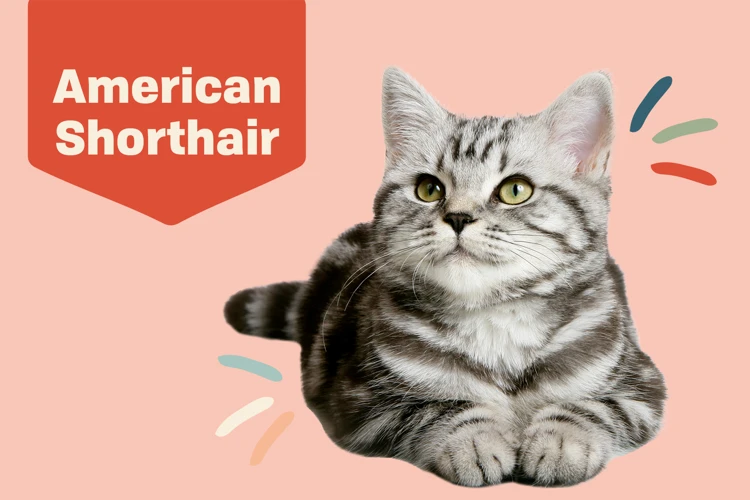
Understanding the behavior of your American Shorthair is important in order to identify and solve any potential problems they may have. Cats can exhibit a wide range of behaviors, some of which may be undesirable or even harmful. While it can be perplexing to deal with behavioral issues, it is important to know that many of these problems can be addressed with the right knowledge and approach. In the next sections, we will explore the causes of behavioral problems in American Shorthairs, as well as some common issues that may arise. Additionally, we’ll provide tips for how to solve these problems and know when to seek professional help. Before we dive in, make sure to check out our article on playtime for American Shorthairs and how this can contribute to their behavior.
Causes of Behavioral Problems
Behavioral problems in American Shorthairs can be caused by a variety of factors, both internal and external. Identifying these causes can help you find the right solution to address the problem.
One common cause of behavioral problems is stress and anxiety. Cats are sensitive creatures that can easily become anxious or stressed due to changes in their environment or routine. This can lead to a variety of behavioral issues, such as aggression, destructive behavior, and litter box problems.
Poor socialization during the early stages of a kitten’s life can also lead to behavioral problems in American Shorthairs. If a kitten does not have enough positive interactions with humans, other cats, and the environment, they may develop fearfulness or aggressive behavior as they grow up.
Another potential cause of behavioral problems is medical issues. Cats may exhibit changes in behavior if they are in pain or discomfort due to an underlying medical issue. For example, a cat experiencing urinary tract problems may avoid the litter box, leading to inappropriate elimination.
Finally, environmental factors such as a lack of stimulation or inadequate litter box maintenance can also contribute to behavioral issues in American Shorthairs.
Understanding the underlying causes of behavioral problems in American Shorthairs is the first step in addressing and resolving them. Providing a safe and comfortable environment, as well as addressing any medical issues, can go a long way in promoting positive behavior in your furry friend.
Learn more about common vocalizations in American Shorthairs.
Common Behavioral Problems in American Shorthairs
As an assistant, I understand that owning an American Shorthair comes with its own set of unique challenges. Here are some of the most common behavioral problems that American Shorthairs experience and how to solve them:
| Behavioral Problem | Solution |
|---|---|
| Scratching Furniture | Provide a scratching post, use deterrent sprays, and cover furniture with blankets or slipcovers. |
| Excessive Meowing | Identify the cause, such as hunger or attention seeking, and address it accordingly. Ensure that your cat has plenty of food, water, and toys to keep them occupied. |
| Aggression Towards People | Work with a professional trainer or behaviorist to determine the cause of aggression and develop a plan to address it. Avoid punishment and instead use positive reinforcement to encourage good behavior. |
| Fearfulness | Create a safe and secure environment for your cat, and slowly expose them to new experiences and people. Use positive reinforcement to help build confidence. |
| Litter Box Avoidance | Ensure that the litter box is clean and accessible, and consider changing the type of litter or location of the box. |
Remember, each cat is unique and may require a different approach to addressing behavioral problems. It is important to be patient and consistent when working with your American Shorthair to ensure long-term success.
Problem-Solving Tips
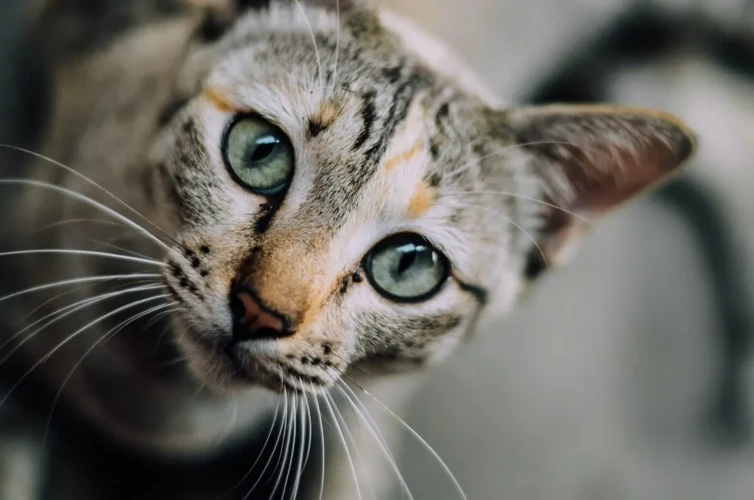
As a responsible cat owner, it can be frustrating to deal with behavioral problems in your American Shorthair. Fortunately, there are several steps you can take to help alleviate these issues. By following some simple tips and tricks, you can create a happier and healthier environment for your furry companion. Let’s explore some solutions to common behavioral problems in American Shorthairs.
Tip 1: Establish a Routine
One effective way to prevent and address common behavioral problems in American Shorthairs is to establish a routine for them. This involves setting consistent times for feeding, playtime, and even grooming. Creating a structured environment for your American Shorthair helps reduce their anxiety and stress levels by making them feel secure and well-cared for. Here are few ways to establish a routine:
- Set a time for feeding: Giving your cat a set time for meals can help them feel secure and ensure that they are well-fed. It’s important to provide your cat with fresh water as well.
- Designate playtime: Engaging your American Shorthair in play can help keep them active and provide them with stimulation. Try to stick to a set time each day for play and designate specific toys or games you’ll use during playtime.
- Keep your cat’s daily routine consistent: Consistency is key, and ensuring that your cat knows what to anticipate each day can help keep them on a steady path. Add grooming and cleaning times to your routine as well.
Whether your American Shorthair is experiencing behavioral problems or not, establishing a routine can be very helpful in providing them with comfort and keeping them well-adjusted. Make sure to experiment with different routines to find what works best for you and your pet’s needs.
Tip 2: Provide Adequate Stimulation
American Shorthairs are active and curious cats who require plenty of stimulation to maintain a healthy and happy lifestyle. Here are some tips to provide your American Shorthair with adequate stimulation:
1. Playtime: American Shorthairs love to play, so make sure to set aside time to play with your cat each day. Use interactive toys such as feather wands or laser pointers to keep your cat engaged and active.
2. Puzzle Feeders: Puzzle feeders can be a great way to provide mental stimulation to your American Shorthair. These toys require your cat to work for their food, which can help satisfy their natural instincts to hunt and play.
3. Vertical Space: American Shorthairs love to climb and explore, so providing adequate vertical spaces can help keep them stimulated. Consider investing in a cat tree or adding shelves to your walls to create a vertical playground for your cat.
4. Outdoor Time: If possible, allow your American Shorthair to explore the great outdoors. However, make sure to supervise your cat and provide a safe and secure outdoor environment to prevent any accidents.
5. Socialization: American Shorthairs are social cats, and interaction with other cats and humans is essential for their overall well-being. Consider introducing your cat to new environments, experiences, and people to keep them stimulated and prevent boredom.
Providing adequate stimulation is an important aspect of caring for an American Shorthair. By incorporating these tips into your cat’s routine, you can help keep them healthy, happy, and entertained.
Tip 3: Encourage Positive Behavior
Encouraging positive behavior in your American Shorthair is an important part of training and preventing behavioral problems. Here are some tips for promoting good behavior in your cat:
| Tip | Explanation |
|---|---|
| Use positive reinforcement | When your cat exhibits good behavior, such as using the litter box or scratching the scratching post, reward them with treats, praise, or playtime. Positive reinforcement helps your cat associate good behavior with positive experiences. |
| Redirect bad behavior | If you catch your cat engaging in unwanted behavior, such as scratching furniture or chewing on household objects, redirect their attention to an appropriate activity, such as playing with a toy or scratching a designated scratching post. This encourages your cat to focus on positive behavior instead of engaging in destructive behavior. |
| Be consistent | Consistency is key when it comes to promoting positive behavior. Make sure everyone in your household knows the rules and sticks to them. If your cat is not allowed on certain furniture, for example, make sure everyone enforces this rule consistently. |
| Avoid punishment | Punishing your cat for bad behavior can be counterproductive and lead to further behavioral problems. Instead of punishing your cat, use positive reinforcement to encourage good behavior. |
| Understand your cat’s needs | Understanding your cat’s natural instincts and needs is important when it comes to promoting positive behavior. For example, providing your cat with plenty of scratching posts and toys can help satisfy their natural urge to scratch and play. |
By encouraging positive behavior, you can help prevent common behavioral problems in American Shorthairs and strengthen the bond between you and your furry friend. Remember to reward good behavior, redirect bad behavior, be consistent, avoid punishment, and understand your cat’s needs.
Tip 4: Address Litter Box Issues
Litter box problems are one of the most common behavioral issues reported by cat owners, and American Shorthairs are no exception. A messy or inconsistent litter box can cause stress, anxiety, and even health problems for your beloved pet.
Causes of Litter Box Issues
There are many reasons why a cat may develop litter box issues. It could be due to a medical issue such as a urinary tract infection or bladder stones. On the other hand, it could be behavioral, such as stress or anxiety, dislike of the litter type or location, or lack of privacy. It is important to rule out any medical issues before addressing potential behavioral concerns.
Tips for Addressing Litter Box Issues
| Tips | Explanation |
|---|---|
| 1. Try a Different Type of Litter | Consider switching to a different type of litter and see if your cat responds positively. Some cats prefer unscented litter, while others prefer litter with activated carbon or baking soda. |
| 2. Provide Enough Litter Boxes | It is recommended to have at least one litter box per cat, plus an extra one. This ensures that each cat has enough space and privacy when using the litter box. |
| 3. Keep the Litter Box Clean | Cats are clean animals and may refuse to use a dirty litter box. Scoop the litter box daily and completely change the litter and clean the box at least once a week. |
| 4. Change the Litter Box Location | Your cat may be avoiding the litter box because it is in a location they don’t like. Try relocating the litter box to a quieter, more private area. |
| 5. Rule Out Medical Issues | If the above steps do not resolve the issue, it may be due to a medical issue. Take your cat to the vet for a check-up |
Conclusion
Litter box problems can be frustrating for both the cat owner and cat. However, with patience and persistence, addressing and resolving litter box issues can lead to a happier and healthier pet. Remember to provide enough litter boxes, keep them clean, and try different types of litter if necessary. And if the issue persists, don’t hesitate to seek advice from a veterinarian.
Tip 5: Handle Aggression and Fearfulness Carefully
American Shorthairs are generally friendly, affectionate, and easygoing cats. However, some may exhibit aggression and fearfulness, which can be concerning for their owners. Here are some tips for handling such behavior carefully:
| Tips | Description |
|---|---|
| 1 | Identify the Triggers: Try to identify the triggers that cause aggression and fearfulness in your American Shorthair. Some common triggers include loud noises, unfamiliar visitors, and new environments. Once you identify the triggers, try to avoid or minimize exposure to them. |
| 2 | Provide Safe Spaces: Providing your American Shorthair with a safe space can help reduce fearfulness and aggression. A safe space can be a quiet room with a comfortable bed, toys, and water. Encourage your cat to use it when they feel stressed or scared. |
| 3 | Use Positive Reinforcement: Positive reinforcement can be a powerful tool for managing aggression and fearfulness. Reward your American Shorthair with treats and toys when they exhibit good behavior. Praise them and give them attention when they are calm and relaxed. |
| 4 | Avoid Punishment: Punishing your American Shorthair for exhibiting aggression or fearfulness can worsen the behavior. Avoid physical punishment, as it can lead to more aggression and fear. Instead, focus on positive reinforcement and distraction. |
| 5 | Seek Professional Help: If your American Shorthair’s aggression or fearfulness persists and is causing problems, seek professional help from a veterinarian or animal behaviorist. They can help identify the underlying cause of the behavior and develop a plan to manage it. |
Remember that aggression and fearfulness in American Shorthairs can be the result of underlying health issues, such as pain or illness. It’s important to rule out any medical causes before addressing the behavior. By identifying the triggers, providing safe spaces, using positive reinforcement, avoiding punishment, and seeking professional help when necessary, you can help your American Shorthair overcome their aggression and fearfulness and lead a happy, healthy life.
When to Seek Professional Help
It’s always important to address behavioral problems in your American Shorthair as soon as possible. However, there may come a point where your attempts to solve the issue yourself are not enough. In these instances, it may be necessary to seek professional help.
Signs That Professional Help May Be Needed:
If your American Shorthair’s behavioral problems persist despite your best efforts to solve them, it may be time to seek professional help. Here are some signs that it’s time to consult with a veterinarian or animal behaviorist:
- Aggressive behavior that leads to injury or bodily harm.
- Uncontrolled marking or spraying outside of the litter box.
- Chronic fear or anxiety that results in hiding or avoidance behavior.
- Excessive vocalization and meowing that disrupts daily life.
- Self-destructive behavior, such as excessive grooming or biting themselves.
How Professionals Can Help:
Veterinarians and animal behaviorists are trained to identify and address behavioral problems in cats, including American Shorthairs. They may use a variety of techniques and approaches to help solve your cat’s problem, including:
- Diagnostic tests to rule out any underlying medical conditions.
- Behavioral modification techniques and training exercises.
- Prescription medication to address anxiety or aggression.
- Referral to a specialist for more intensive treatment.
It’s important to remember that seeking professional help does not mean you’re a bad pet owner. Sometimes, even with the best intentions and efforts, behavioral problems can be complex and difficult to solve. Seeking professional guidance can provide you with the resources and support to ensure your American Shorthair lives a happy, healthy, and well-adjusted life.
Conclusion
After reading this guide, we hope you have a better understanding of the common behavioral problems that American Shorthair cats can experience, as well as some effective ways to manage and solve these issues.
Remember, if your cat is exhibiting concerning behavior, it’s essential to approach the problem with patience and understanding. Establishing a routine, providing stimulation, encouraging positive behavior, and addressing litter box issues are just a few of the many techniques you can use to help your feline friend.
If you’ve tried various tactics and still find that your cat is struggling with behavioral problems, it might be time to seek professional help. A veterinarian or animal behaviorist can provide more specialized assistance and guidance.
Overall, the key to managing American Shorthair behavioral problems is to be proactive and attentive to your cat’s needs. By staying observant and addressing problems early, you can help your cat feel happy, healthy, and secure in their home.
Frequently Asked Questions
1. How common are behavioral problems in American Shorthairs?
Behavioral problems can occur in any breed of cat, but American Shorthairs are generally a well-behaved breed. However, some individuals may display certain behavioral issues due to genetic predisposition, trauma, or environmental factors.
2. What causes behavioral problems in American Shorthairs?
Behavioral problems can be caused by a range of factors, such as changes in routine, lack of stimulation, inadequate litter box maintenance, fearfulness, or underlying medical issues.
3. Can behavioral problems in American Shorthairs be prevented?
While some behavioral issues are not preventable, establishing a consistent routine, providing adequate stimulation, and addressing potential triggers can help reduce the likelihood of certain problems.
4. How can I tell if my American Shorthair has a behavioral problem?
If your American Shorthair is displaying unusual or concerning behavior, such as excessive meowing, aggression, avoidance, or litter box issues, it may be a sign of a behavioral problem.
5. How long does it take to solve a behavioral problem in my American Shorthair?
The duration of treatment for a behavioral problem in an American Shorthair will vary depending on the underlying cause, severity, and the cat’s individual responsiveness to interventions. Some problems may be resolved within a matter of weeks, while others may require long-term management.
6. Can medication be used to treat behavioral problems in American Shorthairs?
In some cases, medication may be recommended by a veterinarian or animal behaviorist as part of a broader treatment plan for certain behavioral problems in American Shorthairs. However, medication is not always necessary or appropriate depending on the specific problem and cat.
7. Should I punish my American Shorthair for exhibiting unwanted behavior?
No, punishment is not an effective way to address behavioral problems in American Shorthairs. Punishment can actually exacerbate existing problems and lead to new ones, such as fearfulness and aggression.
8. How can I make my American Shorthair more comfortable in its environment?
To make your American Shorthair more comfortable in its environment, provide a predictable routine, adequate stimulation, and a safe space to retreat to. Additionally, ensure that litter boxes are clean and easily accessible.
9. Can I train my American Shorthair to exhibit certain behaviors?
Yes, training can be used to encourage desired behaviors in American Shorthairs, such as using a scratching post or coming when called. However, training should always be positive and reward-based.
10. When should I seek professional help for my American Shorthair’s behavioral problem?
If your American Shorthair’s behavioral problem is causing significant distress or disruption to daily life, or if you are unsure of the underlying cause, it may be time to seek professional help from a veterinarian or animal behaviorist.





